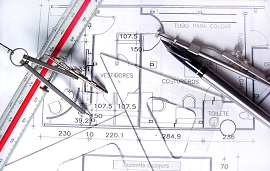 Personal preferences are the key to a properly zoned air conditioning system. This means that while this can be a very practical method to save energy, you can only maximize your comfort if each zone is correctly calibrated, cooling areas of your home only where and when you need it.
Personal preferences are the key to a properly zoned air conditioning system. This means that while this can be a very practical method to save energy, you can only maximize your comfort if each zone is correctly calibrated, cooling areas of your home only where and when you need it.
The Basics of Zoning:
When your central air conditioning system does not feature zoning, you will be cooling your entire home even whether you are using areas or not. The system will be controlled with a single thermostat, which means that every room will be kept at the same temperature. Fortunately, zoning allows you to use multiple thermostats to customize your cooling to suit different areas of your home.
Zoning is made possible by the installation of dampers. These are motorized circular discs that are placed into the duct network directing cooled air throughout your home. Experienced HVAC contractors will be able to advise you on the best way to zone the air conditioning in your home. The general rule of thumb is that setting a few zones will create a more economical system. For example, you could divide your home into living area and sleeping area zones. There may be natural dividing points which would indicate the ideal placement of zones, such as upstairs and downstairs. You will be able to condition the zones according to your personal preferences and requirements.
The Benefits of Zoning:
Zoning offers several benefits. It not only boosts energy efficiency since you won’t be cooling areas of the house not in use, but it also personalizes your system to suit your particular preferences. For example, you may prefer to keep your bedroom slightly cooler than your living space in summer, to promote a restful night’s sleep. This is possible since the thermostat in the sleeping area zone can be set to a different temperature to the one controlling the living area cooling.
The Potential Problems of Zoning:
Unless there has been a mistake during installation, zoning is typically not problematic. A proper zoning system works in the same way as a single thermostat central system. This does mean that it is still possible for the same problems to occur. The most obvious potential problems would be uneven or inadequate airflow and insufficient air conditioning. The only other potential concern is if the damper mechanics are not intake. Should this problem occur, it should be immediately apparent, since the air received in the zone will not correspond to the thermostat. This issue can be resolved by an HVAC technician, who can assist you in resetting the thermostats in your home.
Research suggests that zoning could reduce your energy bills by as much as 30%. Since you can program your thermostats to suit your preferences, you can still enjoy a comfortable temperature in areas of your home as and when you need it. This means that you can relax during even the hottest summer months, knowing that your air conditioning is operating at optimum efficiency, reducing your cooling bills and your environmental impact.
